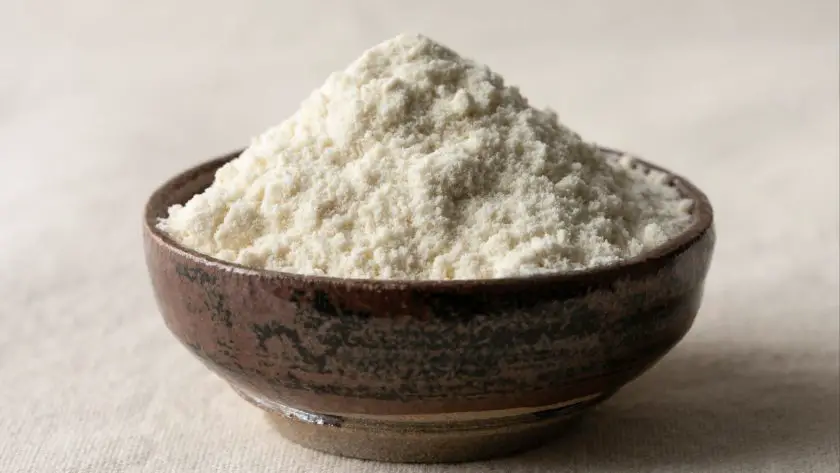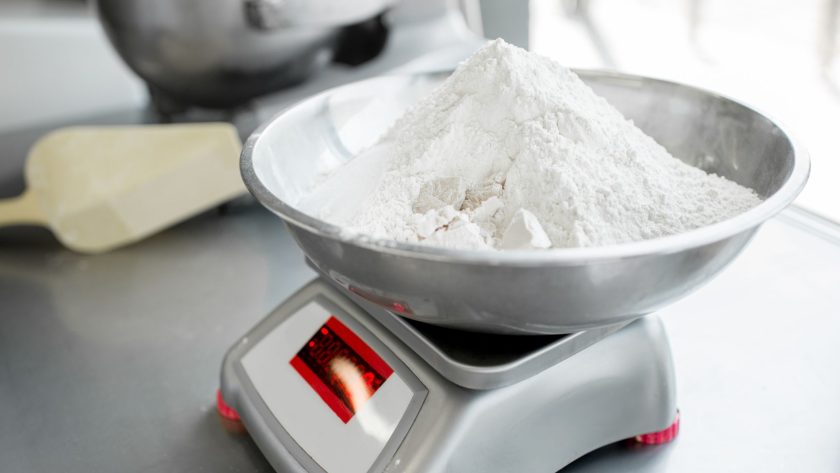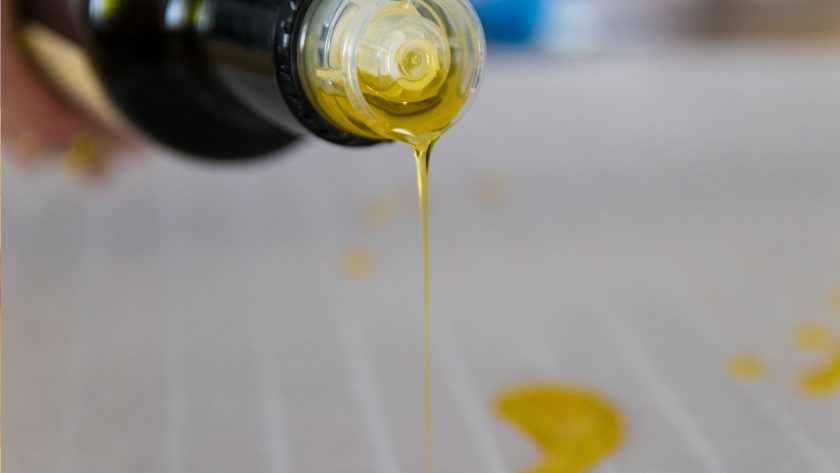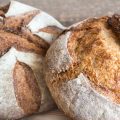Achieving the perfect rise, crumb, and tang takes mastery of your main ingredient: flour. With so many options from bread to rye to ancient grains, choosing the right flour for your sourdough can be overwhelming. Specific types of flour for sourdough bread shape texture and taste in dramatically different ways. Use the wrong one, and you’ll end up with a dense loaf lacking that sourdough zing.
This definitive guide details the unique characteristics of top flours to empower your sourdough pursuits. You’ll gain priceless insights from expert artisan bakers and walk away knowing exactly which flours to use for the flavor, nutrition, and lift your loaves deserve.

Table of Contents
- Understanding Flour Types
- White Flour for Sourdough
- Rye Flour
- Spelt Flour in Sourdough
- Gluten-Free Options
- Blended Flour Approaches
- Expert Bakers’ Recommendations
- Conclusion
- Types Of Flour For Sourdough Bread: FAQs
Understanding Flour Types
When it comes to baking sourdough bread, the type of flour used can have a significant impact on the final result. Choosing the right flour is essential for achieving the desired flavor, texture, and rise. There are several factors to consider when selecting flour for sourdough bread.
Gluten Content
One of the most important factors is the gluten content of the flour. Gluten is a protein that provides structure and elasticity in bread dough. Higher protein bread flours with gluten contents of 12-14% are ideal for sourdough bread. They promote good rise and an open crumb structure. All-purpose flours with 10-12% gluten content can also work well. Lower protein cake or pastry flours lack the gluten strength needed to properly stretch and retain gas during fermentation.
Protein Levels
Along with gluten, the overall protein percentage of flour affects sourdough bread. Most artisan bread bakers recommend flours with at least 11-12% protein content. The proteins in flour, including gluten, contribute to the development of dough structure. Higher protein flours produce stronger dough that can support the large air pockets and irregular holes that define artisanal sourdough loaves.
Impact on Texture
Protein and gluten levels directly correlate to the final texture of sourdough bread. Higher protein bread flours lead to a chewy, toothsome crumb. Lower protein content all-purpose or pastry flours create a softer, more tender crumb. The extensibility of the gluten network determines whether the interior crumb is dense or light.
Flavor Contributions
Beyond structure, the flour itself imparts flavor. Hard red winter wheats and hard white wheats have moderate protein contents and a nutty, wheaty taste. Soft white wheats are lower in protein with a milder flavor. Rye and whole wheat flours add earthiness, while ancient grains like spelt or einkorn provide a distinct, rich flavor.

White Flour for Sourdough
White flour is commonly used in sourdough bread baking for its versatility and mild flavor. When properly handled, white flours can create loaves with good rise and an even, fine crumb texture. However, not all types of white flour perform the same in sourdough recipes.
Benefits of White Flour
Most artisan bakers prefer bread flours milled from hard white wheat over all-purpose flour for sourdough. Hard white wheat varieties have higher protein content, usually 12-13.5%. This gives the flour strength and elasticity to stretch during proofing without tearing. The extensible gluten meshes well with the acids produced in long sourdough fermentation. Since hard white wheat lacks bran and germ, the resulting flour has a neutral taste that allows the complex sourdough flavors to shine. The milder flavor of white flour can appeal to those new to sourdough’s characteristic tang.
Limitations of White Flour
While versatile, white flours lack the added nutrition and depth of flavor provided by whole grain flours. All-purpose flour may seem convenient, but its lower protein content can prevent adequate gluten development needed for the open crumb structure of artisan loaves. Weaker AP flours may also have trouble supporting heavy sourdough starters without deflating. The minimal flavor of white flour allows the sourness to overpower. For bakers wanting more complexity, incorporating a portion of whole wheat or rye adds multidimensionality.
When choosing a white flour, opt for bread flours milled from hard white wheat with adequate protein for strength and extensibility. While convenient, all-purpose flours risk dense loaves. For flavor, blend with small amounts of whole grain.
- High Up In Mountain Valleys In The Usa, Family-Owned Farms Organically Grow The Wheat For This Flour.
- The Grain Is Called Premium Select Hard Red And We Expertly Mill It For That All-Important Consistency. Got A Recipe That Calls For Flour? This Is Your Organic All-Purpose Go-To.
- Trust & Quality We Are Proud To Offer This Product To You Because It Meets Our Rigorous Quality Standards, Which Prohibit Over 100 Ingredients For Both Food And Supplements.
- 365 by Whole Foods Market products give you that dance-down-the-aisles feeling, virtual aisles too! Our huge range of choices with premium ingredients at prices you can get down with makes grocery shopping so much more than tossing the basics in your cart.
- An Amazon br
Prices pulled from the Amazon Product Advertising API on:
Product prices and availability are accurate as of the date/time indicated and are subject to change. Any price and availability information displayed on [relevant Amazon Site(s), as applicable] at the time of purchase will apply to the purchase of this product.
Rye Flour
Rye flour brings a unique flavor profile and fermentation quality to sourdough bread. Its hearty taste and textural complexity make it a favorite flour for adding depth and character to loaves. Understanding the properties of rye can help bakers utilize it effectively in their sourdough recipes.
Distinctive Flavor
The most recognizable contribution of rye flour is its assertive, earthy flavor. The taste comes from pentosans and organic acids present in rye that are not found in comparable levels in wheat. This imparts tanginess, spice, and a rich molasses-like sweetness. The hearty flavor of rye stands up well to long fermentation and adds bold tasting notes to the sourdough crumb. Even 20% rye flour can significantly influence the overall flavor.
Enhanced Fermentation
Beyond taste, rye flour supports active fermentation in sourdough starters and doughs. Rye contains more sugars than wheat, fueling yeast and bacterial activity. Its lower gluten content makes it more extensible, allowing expansion under the gases produced. The organic acids help strengthen the gluten network. This combination enables rye-based sourdoughs (like my Sourdough Rye Bread Recipe and Rustic Rye Sourdough Bread) to rise well without requiring as much kneading. The increased enzymatic activity also contributes to the unique texture of rye bread.
Challenging Crumb
With benefits comes challenge. Rye flour creates a denser crumb than wheat. Its lack of gluten limits the ovenspring and openness typical of sourdough loaves.Excess rye can lead to a heavy, compact texture. The bran and fiber absorb more water, making doughs sticky and difficult to work with. Such factors require adjusting hydration, fermentation time, and kneading to achieve an airier texture.
Ideal Percentages
When using rye flour, balance is key. Most bakers recommend limiting rye to 20-30% of the total flour to retain adequate rise and structure. At higher levels, supplementing with vital wheat gluten helps strengthen the dough. Lower protein bread flours compensate for rye’s lack of stretchiness. The ideal amount depends on the characteristics of each flour blend. Gradually increasing the rye percentage helps determine the right balance for a particular recipe.
With some tweaking, rye flour can bring immense character and complexity to sourdough bread. Its associations with dense, heavy loaves can be overcome through understanding its unique properties and fermentation needs. Rye truly shines when used judiciously to add undertones of flavor and texture.
- Completely organic and 100 percent grown and milled in the United States, our flour blend is similar to white rye flour but with more bran, offering a darker color and more robust flavor for rye baked go
Prices pulled from the Amazon Product Advertising API on:
Product prices and availability are accurate as of the date/time indicated and are subject to change. Any price and availability information displayed on [relevant Amazon Site(s), as applicable] at the time of purchase will apply to the purchase of this product.
Spelt Flour in Sourdough
Spelt is an ancient grain that can add tremendous flavor and nutrition to your sourdough loaves. This hardy wheat relative offers a tasty twist on traditional wheat-based sourdough with its exceptionally nutty, earthy taste. Understanding the unique properties of spelt flour helps bakers incorporate it into their recipes (like spelt sourdough bread).
Nutritional Benefits
One of the biggest advantages of spelt is its stellar nutritional profile. Spelt packs more protein, minerals, and B vitamins than regular wheat. It’s an excellent source of zinc, copper, manganese, phosphorus, niacin, and riboflavin. The combination of protein and fiber also helps stabilize blood sugar levels. Since spelt contains gluten, it can’t be considered gluten-free. But many find it easier to digest than modern wheat. Its nutritional density makes spelt a fantastic way to upgrade your sourdough.
Distinct Taste Profile
Beyond nutrition, spelt brings a delicious hearty flavor. The taste is often described as nutty, sweet, and earthy. Spelt has higher protein than soft wheat but less than most hard wheats. This gives it more gluten strength than pastry wheat, while being less chewy than bread flour. The more delicate gluten structure contributes to a tender, almost flaky crumb. That distinctive texture paired with spelt’s rich flavor is a definite win.
Impact on Crumb and Rise
Due to spelt’s low elasticity, incorporating too much can make doughs sticky and dense. Limiting spelt flour to 30% or less is recommended. The safest route is substituting it for up to half the bread flour in a recipe. Be prepared to adjust hydration as spelt absorbs more water. Allowing for longer fermentation times gives the gluten time to develop. With some tweaking, spelt flour can create magnificent flavor and rise in sourdough loaves.
Spelt’s captivating taste and stellar nutrition make it a fantastic addition to sourdough breads. While requiring adjustments, its wholesome flavor and added nutrition are worth the effort. If you’re looking to enhance your loaves, consider incorporating this ancient grain into your next bake.
- MAKE IT GRAIN: Spelt Flour is an heirloom grain full of flavor, nutrition and the potential to create delicious foods like savory spelt muffins and sweet spelt crepes
- AN ANCIENT GRAIN: Over 8,000 years ago a domesticated wheat and a wild grass crossed; The result was an incredibly nutritious grain thats easier to digest
- BAKED IN POSSIBILITIES: Highlight this ancient grain in savory spelt muffins and sweet spelt crepes, or substitute for wheat for more flavor and less gluten
- THE GRAIN YOU CRAVE: Distinctly sweet, nutty flavor; A rich source of fiber, iron and manganese; Did we mention its easier to digest than wheat?
- BOBS RED MILL: Make folks a little happier; Its the idea that keeps our stone mills grinding to fill every bag with wholesome goodn
Prices pulled from the Amazon Product Advertising API on:
Product prices and availability are accurate as of the date/time indicated and are subject to change. Any price and availability information displayed on [relevant Amazon Site(s), as applicable] at the time of purchase will apply to the purchase of this product.
Gluten-Free Options
Baking delicious sourdough bread without gluten may seem daunting, but with the right flour substitutions, even those with dietary restrictions can enjoy homemade loaves. When gluten is off limits, getting the proper balance of protein and starch for rise and structure takes experimentation. Understanding the properties of various gluten-free flours helps adapt recipes for great taste and texture.
Teff Flour
Teff flour, made from a tiny Ethiopian grain, adds fantastic flavor to gluten-free sourdough. With a molasses-like sweetness and nutty taste, teff provides complexity. It has higher protein than many gluten-free flours, lending binding and slight chewiness. Due to its small size, using a blender ensures a fine consistency. Limit teff to 30% of total flour to prevent denseness. The flavor pairs wonderfully with ancient grains like sorghum or millet.
- WHOLE GRAIN GOODNESS: Teff Flour is a pleasingly light, uniquely flavored, 100% whole grain flour; use it to make Ethopian Injera flatbread, pie crust, cookies, bread and more
- GLUTEN FREE: To assure the integrity of our gluten free products, we’ve built a separate 100% gluten free facility
- GOOD SOURCE OF IRON: One serving provides 10% of your daily value of iron
- NON-GMO: Non-GMO Project Verified; we’ve always been committed to sourcing raw materials that are not modified through genetic engineering
- BOBS RED MILL: Make folks a little happier: it’s the idea that keeps our stone mills grinding to fill every bag with wholesome goodn
Prices pulled from the Amazon Product Advertising API on:
Product prices and availability are accurate as of the date/time indicated and are subject to change. Any price and availability information displayed on [relevant Amazon Site(s), as applicable] at the time of purchase will apply to the purchase of this product.
Sorghum Flour
Another gluten-free flour gaining popularity is sorghum. The mild, lightly sweet taste works well in sourdough accompanied by other flours for texture. Sorghum has starch that gelatinizes during baking, helping mimic the elasticity of gluten. This makes it a great base flour. Stay below 50% sorghum, as too much creates a gummy crumb. For lighter loaves, sorghum shines when blended with other flours and starches.
- Sorghum flour is stone ground from whole grain Sorghum kernels, an ancient cereal grain native to Africa and Australia that has been cultivated for thousands of years. We bring you the finest, the purest, best quality, 100% all-natural Sorghum Flour in a resealable pouch!
- Sorghum flour, also known as great millet and jowar, is a great pantry staple to bring in to your kitchen. Sorghum flour has a mild taste, a smooth texture and is slightly sweet. Enhance your kitchen creations by using Sorghum flour in your cakes, cookies, muffins, pancakes, porridge, flatbreads and much more!
- Specialty diet? No problem! Sorghum flour will suit almost any diet. Sorghum flour is gluten free, soy free and nut free. Our single ingredient Sorghum flour is kosher, vegan, whole grain, all natural and non-GMO. Wow! If you are looking for a cooking or baking alternative, you found it right here!
- Did someone say health? Sorghum flour is naturally gluten free and can be used as part of a gluten free flour blend or combined with all-purpose flour for a lower gluten content. Sorghum flour is packed with good and healthy nutrition like protein and fiber as well as other nutrients.
- Sorghum flour is a low-glycemic food, making it a great food option for people with diabetes. The high fiber content fount in sorghum flour is great on your digestive system and will leave you feeling fuller. Enjoy the many benefits of our whole grain Sorghum flo
Prices pulled from the Amazon Product Advertising API on:
Product prices and availability are accurate as of the date/time indicated and are subject to change. Any price and availability information displayed on [relevant Amazon Site(s), as applicable] at the time of purchase will apply to the purchase of this product.
Cassava Flour
Also called tapioca or yuca flour, cassava flour adds structure without gluten. Made from the starchy cassava root, it becomes elastic when heated, making dough stretchy and chewy. Limit cassava flour to 30% of the blend, as its stickiness requires extra liquid. Pair it with coconut or almond flour to balance moisture absorption. Cassava gives a deliciously light, fluffy texture when properly hydrated.
- MADE WITH 100% YUCA: Ottos Naturals Cassava Flour is a single-ingredient, plant-based baking flour made from Cassava, also known as Yuca. Its grain-free, gluten-free, nut-free and perfect for paleo or vegan lifestyles, but has the taste and texture of wheat flour. With Ottos, you can make any recipe allergen-free and bake with peace of mind!
- FREE OF TOP 8 ALLERGENS: Because Ottos Naturals is made from Cassava, its naturally free of the most common allergens: grain, gluten, dairy, eggs, soy and tree nuts. Further, Ottos doesnt share equipment with these common allergens, so we can promise you and your family that we are guaranteed free of the top 8 allergens. Were also Gluten-Free Certified by the Gluten Intolerance Group.
- FROM CASSAVA TO FLOUR: Cassava has been a staple food around the world for centuries. What sets us apart from tapioca is the way we dry and grind this sustainable root vegetable using the whole root, not just the extracted starch. The result is a light, single-ingredient flour thats grain-free, gluten-free & nut-free.
- 1:1 WHEAT FLOUR SUBSTITUTE BY WEIGHT: Recreate grain-free versions of nearly any recipe with our cassava flour. Its mild flavor & light texture make it an easy 1:1 substitute by weight for all-purpose wheat flour or simply reduce volume by 25%. 1 cup AP flour = 3/4 cup Ottos cassava flour
- THE OTTOS WAY: Ottos Naturals was founded on the love of trying new foods, exploring unique ingredients, and the need for delicious alternatives to traditional foods while still maintaining a gluten and grain-free lifesty
Prices pulled from the Amazon Product Advertising API on:
Product prices and availability are accurate as of the date/time indicated and are subject to change. Any price and availability information displayed on [relevant Amazon Site(s), as applicable] at the time of purchase will apply to the purchase of this product.
Other Binders and Starches
While lacking gluten, ingredients like psyllium husk, xanthan gum, and ground flax act as binders when hydrated. Using 1-2 teaspoons per loaf helps mimic gluten’s stretchiness. Starches like tapioca, arrowroot, and potato flour add moisture and softness. Combining binding agents and starches with gluten-free flours allows properly risen, structurally sound sourdough.
With creativity and experimentation, gluten-free flours can produce wonderful sourdough bread. Try different flour combinations to find the taste and texture that suits your needs. The key is balancing moisture absorption and getting just enough lift. With the right formula, you can savor satisfying gluten-free sourdough (I explore more of the topic of is sourdough gluten free or not on my blog).
Blended Flour Approaches
One of the joys of sourdough bread making comes from experimenting with different flour blends in pursuit of your perfect loaf. Blending two or more flours creates depth of flavor and can yield exciting textures not achievable with a single flour. Take your sourdough to the next level by incorporating a mix of flours into your recipes.
Complementary Blending
When combining flours, think about how their attributes complement one another. For example, blend hearty rye flour with higher protein bread flour to offset rye’s lack of gluten. The bread flour provides structure while the rye imparts bold, earthy notes. In the same vein, nutty whole wheat flour balances the subtle flavor of white flour sourdoughs. Playing flours’ strengths against each other gives the best of both worlds.
Achieving the Right Balance
Finding the ideal ratio when blending flours may require some trial and error. As a general rule, limit specialty flours like rye or spelt to 30% or less of total flour weight. Start with 10-15% and work upwards in increments. Too much of a dense flour can lead to overly compact loaves. Let your preference for taste and texture guide you in determining the perfect flour percentages.
Handling Hydration Adjustments
Since flour blends absorb hydration differently, you’ll likely need to modify water content. Whole grain flours require more hydration than refined flours. Monitor dough consistency as you experiment with flour combinations. Add small amounts of water until reaching the desired texture. Allowing longer autolyse and fermentation times gives flour blends time to fully hydrate before baking.
Tinkering with blended flours makes sourdough an ever-evolving craft. Adjust batches based on your observations for the ideal rise, crumb, and mouthfeel. Keep notes on percentages and hydration for reproducing successful blends. With a spirit of creativity and exploration, flour blending can greatly reward your sourdough pursuits.
Organic vs. Non-Organic Flour
When it comes to sourdough, one of the big decisions is whether to use organic or conventionally-grown flour. While price often plays a role, understanding the differences can help determine the best option for your baking.
Nutritional Value
Organic flour comes from wheat grown without synthetic pesticides or fertilizers. Proponents argue this leads to higher nutritional content in organic flour. However, studies comparing the two have found minimal differences in protein, fiber, vitamins and minerals. Flour processing has a greater impact on nutrition than growing methods. So in terms of nutrition, there is little evidence favoring one over the other.
Taste Differences
Many bakers swear by organic flour, insisting it yields better flavor. This comes down to personal preference, but there are reasons organic flour may taste better to some. Without pesticides, the wheat develops deeper, more complex flavors. Organic fertilization techniques also influence taste. And smaller batch stone-milling often used for organic flour retains more nutrients affecting taste. Subtleties like these can produce nuanced flavor differences appealing to discerning palates.
Health Considerations
Going organic reduces your exposure to synthetic pesticides and chemicals used in conventional farming. For those wanting to minimize toxins in their diet, this offers peace of mind. However, modern wheat production entails very low chemical residues overall. Many reputable organizations consider conventionally-grown wheat safe for human consumption when regulations are followed.
Environmental Impact
Organic production methods emphasize sustainability by eliminating synthetic chemicals and encouraging biodiversity. While still imperfect, organic farming is often viewed as less taxing on the environment compared to conventional practices.

Expert Bakers’ Recommendations
As an avid home baker, I’m always eager to learn tips and techniques from the pros to take my sourdough game to the next level. Who better to get flour recommendations from than expert artisan bakers renowned for their spectacular loaves? I gathered tips from experts to get their insider advice on flour selection for sourdough.
- Preference for Stone-Ground Flour: High-quality, stone-ground flour is recommended for its flavor and nutritional benefits.
- Protein Content in Flour: Bread flour with a protein content of 12-13% is ideal for achieving optimal gluten development and rise in the bread.
- Avoiding Bleached All-Purpose Flour: Bleached all-purpose flour is discouraged due to its lack of strength necessary for quality bread making.
- Use of Bread Flour from Hard Red Winter Wheat: Some experts prefer bread flour stone-milled from hard red winter wheat, often choosing regional flours from small mills for their freshness and unique characteristics (terroir).
- Incorporating Organic High-Extraction Bread Flour: The use of organic high-extraction bread flour with around 12.7% protein content is recommended for its excellent fermentation quality and oven spring. To enhance flavor, small amounts of whole grain flours like rye and whole wheat are sometimes added.
- Custom Wheat Blends: The idea of using a custom wheat blend, stone-milled specifically for individual needs and preferences, is suggested. This approach can be tailored to the desired protein level and baking style.
With artisans generously sharing their knowledge, we home bakers can all take our loaves to masterpiece status.
Conclusion
The journey to creating the perfect sourdough loaf starts with understanding flour. With knowledge of flour properties, textures and tastes, you can now confidently choose flours to achieve your desired crumb, rise and mouthfeel. Blend different flour varieties to create your signature sourdough that showcase complex flavors. With so many whole grain, ancient grain, and gluten-free options, let your imagination run wild with novel flour combinations to tantalize tastebuds.
Yet flour is just the beginning. Sourdough’s depth comes not just from artful ingredients but from the care and craftsmanship applied. With practice makes progress. Let your passion feed innovation. Push boundaries, follow intuition and continue seeking knowledge from experts and experience alike. The joy is not just in the journey’s destination but in the doing.
So get your hands dusty with flour and dive heartfirst into creating your bread masterpieces. That first bite of your own heavenly sourdough is a reward beyond measure for effort and creativity. Full steam ahead fellow bakers – let’s get baking!
Types Of Flour For Sourdough Bread: FAQs
What type of flour is best for sourdough?
For the best rise, crumb texture and gluten development, use high protein bread flour with 12-14% gluten content. Otherwise, opt for all-purpose flour with 10-12% gluten. Avoid lower protein cake or pastry flours. For flavor, incorporate 15-30% rye or whole wheat flour.
Can you use any kind of flour to make a sourdough starter?
No, not all flours can be used to make a sourdough starter. The flour needs to contain gluten to develop the structure necessary for a strong, active starter. Common choices are bread flour, whole wheat flour, or rye flour. Avoid using gluten-free flours like rice, tapioca, or cassava as they lack the proteins required.
Can you use any kind of flour to make a sourdough starter?
No, not all flours can be used to make a sourdough starter. The flour needs to contain gluten to develop the structure necessary for a strong, active starter. Common choices are bread flour, whole wheat flour, or rye flour. Avoid using gluten-free flours like rice, tapioca, or cassava as they lack the proteins required.
What are the 4 types of flour used in the production of bread?
The 4 main types of flour for sourdough bread are:
1. Bread Flour – high protein content for structure
2. All-Purpose Flour – moderate protein for balanced results
3. Whole Wheat Flour – adds nutrition, depth of flavor
4. Rye Flour – imparts hearty, earthy taste
These core flours each contribute unique properties to bread doughs and baked loaves.
What is Type 0 flour sourdough?
Type 0 flour is an Italian classification for the finest, whitest wheat flour with the highest protein content. It has very strong gluten, making it well suited for sourdough bread’s stretchy, chewy texture. Type 0 flour produces excellent rise and light crumb in sourdough loaves while letting the tangy flavor shine.








![[Video] From The Seed To The Peasant Bakery With Nicolas Supiot 11 [video] from the seed to the peasant bakery with nicolas supiot](https://www.mydailysourdoughbread.com/wp-content/uploads/2022/11/image-18-120x120.jpeg)

![Is Keto Sourdough Bread Low Carb - What You Need To Know [Plus Bonus Recipe] 13 Is keto sourdough bread low carb - what you need to know [plus bonus recipe]](https://www.mydailysourdoughbread.com/wp-content/uploads/2022/09/CD-blog-images-2022-09-28T221612.311-e1665964918416-120x120.jpg)

